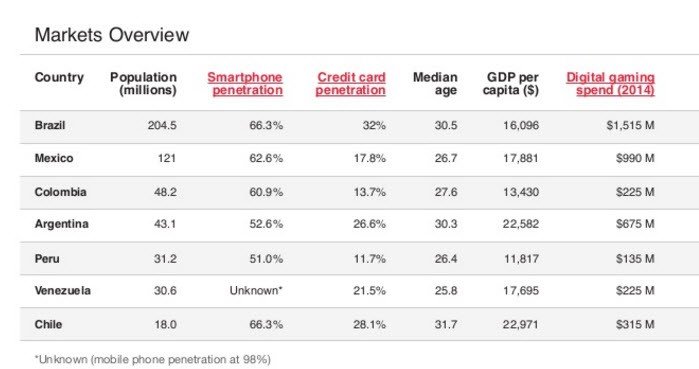As the second largest Spanish-speaking country in the world, the United States is providing more and more reasons why creating a Spanish SEO strategy is important. After all, we know that with the latest Google algorithm changes, it’s more important than ever to have original online copy while speaking to your consumers in their language.
But knowing Spanish is not enough. It takes knowledge of SEO as well as your specific market to truly be successful. Lucky for you, our experts are willing to share some first-hand experience in international SEO.
- Be mindful of regional variations when choosing your keywords. Just like there are many ways in English to say “service road” — like frontage road, side road, ramp, that road that is not the highway but is next to it and has less traffic — the same holds true in other languages. For example, in Mexico the word “torta” means sandwich, while in Colombia the same word means cake. Or in the case of the word “guagua,” in Chile it means baby, while in Puerto Rico it means bus. So imagine my surprise when my friend from Chile was telling how happy she was when she fed the “guagua.” In my head I was thinking: “Oh well, I guess she is really happy about putting gas in the bus.” But when she explained it was a baby instead of a bus, I started to understand. Another example is with the word “tinto.” In Spain, “tinto” is red wine, so when my friend from Colombia came over to my apartment to study and told me she would love a “tinto” at 10 a.m., I was a little taken back. What she really wanted was dark coffee.
- Don’t just translate. While knowing the language is important, a mere translation won’t cut it these days. See what can happen when you just dump in keywords and rely on Google Translate to “understand” the intricacies of a language:


When I started working with Spanish optimization for a major hotel chain in Latin America and the Caribbean, the content was mirroring what they had in English and there were limitations in the ways we could optimize it. Fortunately, during fall 2014, they made some adjustments and opened up the fields to write the content in Spanish and added hreflang to their code. Since this changed, we noticed a steady increase of up to a 20%, proving that it is always better to have content that caters to the market and consumer versus a translation.
- Think about how you want to reach your audience. Are you using country code top-level domain or ccTLD (example.us), subdirectories (example.com/us) or subdomains (us.example)? All of these have their pros and cons. Some could be more expensive and difficult to maintain, while others have a weaker value or weight online. Learn everything there is to know about the market you want to enter and its consumer. For instance, what are the most visited sites and search engines the consumer uses in that country? For example, YouTube is the most visited site in Chile and Colombia, while in the United States, it’s Google. This makes YouTube a higher priority in those countries and can give you an indicator of where you should put additional digital efforts.
- Learn what your consumers’ search and buying behaviors are. Do they share the content? Where do they start their process, via mobile or desktop? Do they buy online? What do they buy? How do they pay? And also, very important, what are your strengths? What is your brand or product bringing that your competitors are not?

When I started working with Spanish optimizations for the hotels in the Caribbean and Latin America, I noticed that their brand wasn’t as strong as national brands such as City Express or Fiesta Americana. There is something about Latin America consumers that make them loyal to the national brand. It makes sense, really, because people like to go with what they know. But when you communicate your message effectively, let them know what makes you different or better, and speak their language. You have a chance to compete and become a known brand among the consumers.
- Make keywords specific. When using Google Keyword Planner, I try to be as precise as possible in our settings. For example, when I look for Spanish keywords, I change the language setting to Spanish and, whenever possible, drill down to a country level, such as Mexico versus all countries. Keeping your user experience in mind will help you come up with ways to reach your target market. Working in the hospitality industry, we know people are often searching for more than just a hotel in the area they’re interested in. They want a hotel with a pool, a hotel with a gym, a suite with a kitchen, etc. Same goes for restaurants. They don’t just want food. They want a kid-friendly restaurant, they want a full bar, they want a restaurant that takes reservations. These are the type of amenities and services to keep in mind while coming up with specific keywords to set your company or product apart.
- Don’t forget about the metadata. You only have a limited amount of characters available, so use them wisely. Now is not the time for long-winded descriptions, fluffy adjectives, and ellipses. While the metadata does not have a direct influence or impact on rankings, it provides a preview of a page and can make or break a consumer’s decision to click and learn more. Think of this space as a place to display your crowned jewel. What makes you different? Why should I choose you versus the competitor?
- Be Consistent. If your on-page elements (i.e. page copy) are in Spanish, then your off-page elements (i.e. metadata, URL structure, ALT tags) should be in Spanish as well. You also need to care for your international site consistently. Just like any English site, Spanish sites need keyword refreshes, time-relevant content, and updated photos as well.
Contact us today and learn how we can work our Spanish SEO magic to maximize your message.







Responses